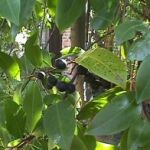| Common Name: |
Cherry Laurel |
| Other Names: |
English Laurel, Cherry Bay |
| Botanical Name: |
Prunus laurocerasus syn. Laurocerasus officinalis |
| Genus: |
Prunus |
| Family: |
Rosaceae |
| Native Location: |
E Europe and SW Asia |
| Cultivation: |
Well-drained, neutral to alkaline soil in sun. Prunus laurocerasus tolerates shade. Prunus spinosa (blackthorn) is a useful plant for hedging in cold, exposed, or coastal ares. Prune fruiting specimens in summer to restrict growth and encourage formation of fruit buds. Trim P. laurocerasus in spring. Leaves and young shoots are often attacked by aphids and caterpillars. Likely diseases and disorders include peach leaf curl, bacterial canker, chlorosis, witches' broom, and honey fungus. Many Prunus species are relatively short-lived. P. laurocerasus may be affected by leafspot and powdery mildew. Most Prunus species are shallow-rooted and will sucker if roots are damaged. Early-flowering species are prone to frost damage. |
| Propagation: |
By seed sown in autumn (species only); by greenwood cuttings in early summer (deciduous species); by semi-ripe cuttings in summer (P. laurocerasus). Cultivars are budded in summer or grafted in early spring. |
| Harvest: |
Leaves (P. persica) are picked in summer and dried for infusions, or (P. laurocerasus) distilled for aqueous extract (cherry laurel water). Bark (P. africana, P. persica, P. serotina) is stripped in autumn and winter and dried for infusions, liquid extracts, powders, syrups, and tinctures; bark of P. africana is also processed for pharmaceutical extracts. Flowers (P. persica) are gathered in spring, and unripe fruits (P. armeniaca, P. domestica, P. mume, P. persica) in summer, and dried for decoctions. Fruits are picked ripe or unripe, depending on use; prunes (cultivars of P. domestica) are often left on the trees to dry. Seeds from ripe fruits are dried for decoctions (P. japonica) or crushed for oil (P. armeniaca, P. dulcis, P. persica). |
| Varieties: |
Castlewellan
syn. Marbled White
Is slow-growing and narrow with white-speckled leaves.
Height: 5m (15ft)
Width: 5m (15ft) |
Otto Luyken
Is compact and free-flowering, with narrow leaves. Often flowers again in autumn.
Height: 1m (3ft)
Width: 1.5m (5ft) |
Schipkaensis
Has a low, spreading habit, narrow leaves, and flowers profusely.
Found near the Schipka Pass in Bulgaria in 1888.
Height: 2m (6ft)
Width: 3m (10ft) |
|
| Height: |
6-8m (20-25ft) |
| Width: |
10m (30ft) |
| Hardiness: |
Z6-10 |
| Parts Used: |
Distilled extract, (Cherry Laurel water). |
| Properties: |
A very poisonous, sedative herb that relaxes spasms, improves digestion, and controls coughing. |
| Medicinal Uses: |
Internally for nausea and vomiting. Externally for eye infections. |
| Economic Uses: |
Almond-flavored cherry laurel water is occasionally used in commercial food flavoring. |
| Warning: |
All parts of P. laurocerasus, notably the leaves and seeds, are harmful if eaten. Bitter-tasting kernels of Prunus species may be fatally toxic in excess. |
| Bibliography: |
The Encylopedia of Herbs by Deni Bown Copyright © 1995, 2001 Dorling Kindersley Limited pp. 331-333
|
